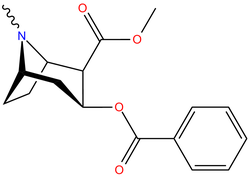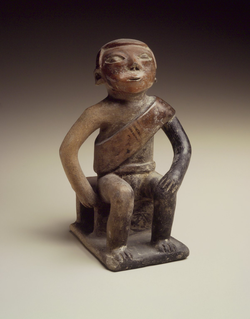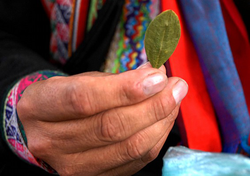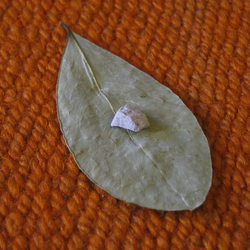Coca

Coca

| Coca | |
|---|---|
| Product name | Coca |
| Source plant(s) | Erythroxylum coca var. coca, Erythroxylum coca var. ipadu,Erythroxylum novogranatense var. novogranatense, Erythroxylum novogranatense var. truxillense |
| Part(s) of plant | Leaf |
| Geographic origin | Andes |
| Active ingredients | Cocaine,benzoylecgonine,ecgonine,others |
| Legal status | |
Coca** is any of the four cultivated plants in the family Erythroxylaceae, native to western South America.
The plant is grown as a cash crop in Argentina, Bolivia, Colombia, Ecuador, and Peru, even in areas where its cultivation is unlawful. There are some reports that the plant is being cultivated in the south of Mexico as a cash crop and an alternative to smuggling its recreational product cocaine. It also plays a role in many traditional Andean cultures as well as the Sierra Nevada de Santa Marta (see Traditional uses).
Coca is known throughout the world for its psychoactive alkaloid, cocaine. The alkaloid content of coca leaves is relatively low, between 0.25% and 0.77%. The native people use it for a stimulant, like coffee, an energy source. Coca leaf extract had been used in Coca-Cola products since 1885, with cocaine being completely eliminated from the products in or around 1903. Extraction of cocaine from coca requires several solvents and a chemical process known as an acid–base reaction, which can fairly easily extract the alkaloids from the plant.
| Coca | |
|---|---|
| Product name | Coca |
| Source plant(s) | Erythroxylum coca var. coca, Erythroxylum coca var. ipadu,Erythroxylum novogranatense var. novogranatense, Erythroxylum novogranatense var. truxillense |
| Part(s) of plant | Leaf |
| Geographic origin | Andes |
| Active ingredients | Cocaine,benzoylecgonine,ecgonine,others |
| Legal status | |
Description
The coca plant resembles a blackthorn bush, and grows to a height of 2 to 3 metres (7 to 10 feet). The branches are straight, and the leaves are thin, opaque, oval, and taper at the extremities. A marked characteristic of the leaf is an areolated portion bounded by two longitudinal curved lines, one line on each side of the midrib, and more conspicuous on the under face of the leaf. The flowers are small, and disposed in clusters on short stalks; the corolla is composed of five yellowish-white petals, the anthers are heart-shaped, and the pistil consists of three carpels united to form a three-chambered ovary. The flowers mature into red berries.
The leaves are sometimes eaten by the larvae of the moth Eloria noyesi
Species and evolution
There are two species of cultivated coca, each with two varieties:
Erythroxylum coca Erythroxylum coca var. coca (Bolivian or Huánuco Coca) – well adapted to the eastern Andes of Peru and Bolivia, an area of humid, tropical, montane forest. Erythroxylum coca var. ipadu (Amazonian Coca) – cultivated in the lowland Amazon Basin in Peru and Colombia.
Erythroxylum novogranatense Erythroxylum novogranatense var. novogranatense (Colombian Coca) – a highland variety that is utilized in lowland areas. It is cultivated in drier regions found in Colombia. However, E. novogranatense is very adaptable to varying ecological conditions. The leaves have parallel lines on either side of the central vein. Erythroxylum novogranatense var. truxillense (Trujillo Coca) – grown primarily in Peru and Colombia. the leaves of E. novogranatense var. truxillense does not have parallel lines on either side of the central vein like all other varieties.
All four of the cultivated cocas were domesticated in pre-Columbian times and are more closely related to each other than to any other species.
There are two main theories relating to the evolution of the cultivated cocas.
The first (put forth by Plowman and Bohm ) suggests that Erythroxylum coca var. coca is ancestral, while Erythroxylum novogranatense var. truxillense is derived from it to be drought tolerant, and Erythroxylum novogranatense var. novogranatense derived from Erythroxylum novogranatense var. truxillense.
Recent research based on genetic evidence (Johnson et al. in 2005, Emche et al. in 2011, and Islam 2011 ) does not support this linear evolution and instead suggests a second domestication event as the origin of the Erythroxylum novogranatense varieties. There may be a common, but undiscovered ancestor.
Wild populations of Erythroxylum coca var. coca are found in the eastern Andes; the other 3 taxa are only known as cultivated plants.
The two subspecies of Erythroxylum coca are almost indistinguishable phenotypically. Erythroxylum novogranatense var. novogranatense and Erythroxylum novogranatense var. truxillense are phenotypically similar, but morphologically distinguishable. Under the older Cronquist system of classifying flowering plants, this was placed in an order Linales; more modern systems place it in the order Malpighiales.
Herbicide resistant varieties
Also known as supercoca or la millionaria, Boliviana negra is a relatively new form of coca that is resistant to a herbicide called glyphosate. Glyphosate is a key ingredient in the multibillion-dollar aerial coca eradication campaign undertaken by the government of Colombia with U.S. financial and military backing known as Plan Colombia.
The herbicide resistance of this strain has at least two possible explanations: that a "peer-to-peer" network of coca farmers used selective breeding to enhance this trait through tireless effort, or the plant was genetically modified in a laboratory. In 1996, a patented glyphosate-resistant soybean was marketed by Monsanto Company, suggesting that it would be possible to genetically modify coca in an analogous manner. Spraying Boliviana negra with glyphosate would serve to strengthen its growth by eliminating the non-resistant weeds surrounding it. Joshua Davis, in the Wired **article cited below, found no evidence of CP4 EPSPS, a protein produced by the glyphosate-resistant soybean, suggesting Bolivana negra was either created in a lab by a different technique or bred in the field.
Cultivation
Coca is traditionally cultivated in the lower altitudes of the eastern slopes of the Andes (the Yungas), or the highlands depending on the species grown. Coca production begins in the valleys and upper jungle regions of the Andean region, where the countries of Colombia, Peru and Bolivia are host to more than 98 percent of the global land area planted with coca. Coca plantations have also recently been discovered in Mexico, which could have major implications for the illegal cultivation of the plant.
Fresh samples of the dried leaves, uncurled, are a deep green colour on the upper, and a grey-green on the lower surface, and have a strong tea-like aroma. When chewed, they produce a pleasurable numbness in the mouth, and have a pleasant, pungent taste. They are traditionally chewed with lime or some other reagent such as bicarbonate of soda to increase the release of the active ingredients from the leaf. Older species have a camphoraceous smell and a brownish color, and lack the pungent taste.
The seeds are sown from December to January in small plots (almacigas) sheltered from the sun, and the young plants when at 40 to 60 centimetres (16 to 24 inches) in height are placed in final planting holes (aspi), or if the ground is level, in furrows (uachos) in carefully weeded soil. The plants thrive best in hot, damp and humid locations, such as the clearings of forests; but the leaves most preferred are obtained in drier areas, on the hillsides. The leaves are gathered from plants varying in age from one and a half to upwards of forty years, but only the new fresh growth is harvested. They are considered ready for plucking when they break on being bent. The first and most abundant harvest is in March after the rainy season, the second is at the end of June, and the third in October or November. The green leaves (matu) are spread in thin layers on coarse woollen cloths and dried in the sun; they are then packed in sacks, which must be kept dry in order to preserve the quality of the leaves.
| Morphology of the coca plant |
|---|
Pharmacological aspects
The pharmacologically active ingredient of coca is the cocaine alkaloid, which is found in the amount of about 0.3 to 1.5%, averaging 0.8%, in fresh leaves. Besides cocaine, the coca leaf contains a number of other alkaloids, including methylecgonine cinnamate, benzoylecgonine, truxilline, hydroxytropacocaine, tropacocaine, ecgonine, cuscohygrine, dihydrocuscohygrine, nicotine, and hygrine. When chewed, coca acts as a mild stimulant and suppresses hunger, thirst, pain, and fatigue. Absorption of coca from the leaf is less rapid than nasal application of purified forms of the alkaloid (almost all of the coca alkaloid is absorbed within 20 minutes of nasal application, while it takes 2–12 hours after ingestion of the raw leaf for alkaline concentrations to peak [18]). When the raw leaf is consumed in tea, between 59 and 90% of the coca alkaloid is absorbed.
The coca leaf, when consumed in its natural form, does not induce a physiological or psychological dependence, nor does abstinence after long-term use produce symptoms typical to substance addiction. [24] Due to its alkaloid content and non-addictive properties, coca has been suggested as a method to help recovering cocaine addicts to wean off the drug.
History
Benzoylmethylecgonine, the psychoactive constituent of coca
Traces of coca have been found in mummies dating 3000 years back. Other evidence dates the communal chewing of coca with lime 8000 years back. Beginning with the Valdivian culture, circa 3000 BC, there is an unbroken record of coca leaf consumption by succeeding cultural groups on the coast of Ecuador until European arrival as shown in their ceramic sculpture and abundant caleros or lime pots. Coca consumption among the North Coast Peruvian tribes begins around 2000 BC as evidenced by the caleros found by Junius Bird at Huaca Prieta and the emergence of dedicated lime containers in the Jetetepeque river valley. Extensive archaeological evidence for the chewing of coca leaves dates back at least to the 6th century AD Moche period, and the subsequent Inca period, based on mummies found with a supply of coca leaves, pottery depicting the characteristic cheek bulge of a coca chewer, spatulas for extracting alkali and figured bags for coca leaves and lime made from precious metals, and gold representations of coca in special gardens of the Inca in Cuzco.
Coca chewing may originally have been limited to the eastern Andes before its introduction to theInca. As the plant was viewed as having a divine origin, its cultivation became subject to a state monopoly and its use restricted to nobles and a few favored classes (court orators, couriers, favored public workers, and the army) by the rule of the Topa Inca (1471–1493). As the Incan empire declined, the leaf became more widely available. After some deliberation, Philip II of Spain issued a decree recognizing the drug as essential to the well-being of the Andean Indians but urging missionaries to end its religious use. The Spanish are believed to have effectively encouraged use of coca by an increasing majority of the population to increase their labor output and tolerance for starvation, but it is not clear that this was planned deliberately.
Coca was first introduced to Europe in the 16th century, but did not become popular until the mid-19th century, with the publication of an influential paper by Dr. Paolo Mantegazza praising its stimulating effects on cognition. This led to invention of coca wine and the first production of pure cocaine. Coca wine (of which Vin Mariani was the best-known brand) and other coca-containing preparations were widely sold as patent medicines and tonics, with claims of a wide variety of health benefits. The original version of Coca-Cola was among these. These products became illegal in most countries outside of South America in the early 20th century, after the addictive nature of cocaine was widely recognized. In 1859, Albert Niemann of the University of Göttingen became the first person to isolate the chief alkaloid of coca, which he named "cocaine".
In the early 20th century, the Dutch colony of Java became a leading exporter of coca leaf. By 1912 shipments to Amsterdam, where the leaves were processed into cocaine, reached 1000 tons, overtaking the Peruvian export market. Apart from the years of the First World War, Java remained a greater exporter of coca than Peru until the end of the 1920s. Other colonial powers also tried to grow coca (including the British in India), but with the exception of the Japanese in Formosa, these were relatively unsuccessful.
In recent times (2006), the governments of several South American countries, such as Peru, Bolivia and Venezuela, have defended and championed the traditional use of coca, as well as the modern uses of the leaf and its extracts in household products such as teas and toothpaste. The coca plant was also the inspiration for Bolivia's Coca Museum.
Traditional uses
Medicine
Traditional medical uses of coca are foremost as a stimulant to overcome fatigue, hunger, and thirst.
It is considered particularly effective against altitude sickness. It also is used as an anesthetic and analgesic to alleviate the pain of headache, rheumatism, wounds and sores, etc. Before stronger anesthetics were available, it also was used for broken bones, childbirth, and during trepanning operations on the skull. The high calcium content in coca explains why people used it for bone fractures. Because coca constricts blood vessels, it also serves to oppose bleeding, and coca seeds were used for nosebleeds. Indigenous use of coca has also been reported as a treatment for malaria, ulcers, asthma, to improve digestion, to guard against bowel laxity, as an aphrodisiac, and credited with improving longevity. Modern studies have supported a number of these medical applications.
Nutrition
Raw coca leaves, chewed or consumed as tea or mate de coca, are rich in nutritional properties. Specifically, the coca plant contains essential minerals (calcium, potassium, phosphorus), vitamins (B1, B2, C, and E) and nutrients such as protein and fiber.
Religion
Coca has also been a vital part of the religious cosmology of the Andean peoples of Peru, Bolivia, Ecuador, Colombia, northern Argentina, and Chile from the pre-Inca period through to the present. Coca leaves play a crucial part in offerings to the apus (mountains), Inti (the sun), or Pachamama (the Earth). Coca leaves are also often read in a form of divination analogous to reading tea leaves in other cultures. As one example of the many traditional beliefs about coca, it is believed by the miners of Cerro de Pasco to soften the veins of ore, if masticated (chewed) and thrown upon them (see Cocomama in Inca mythology). In addition, coca use in shamanic rituals is well documented wherever local native populations have cultivated the plant. For example, the Tayronas of Colombia's Sierra Nevada de Santa Marta would chew the plant before engaging in extended meditation and prayer.
Traditional preparation
Traditionally, coca leaves are prepared either to chew or as a tea (mate de coca).
Chew
In Bolivia bags of coca leaves are sold in local markets and by street vendors. The activity of chewing coca is called mambear, chacchar or acullicar, borrowed from Quechua, coquear (northern Argentina), or in Bolivia, picchar, derived from the Aymara language. The Spanish masticar is also frequently used, along with the slang term "bolear," derived from the word "bola" or ball of coca pouched in the cheek while chewing. Typical coca consumption is about 2 ounces (57 grams) per day, and contemporary methods are believed to be unchanged from ancient times. Coca is kept in a woven fabric pouch (chuspa or huallqui). A few leaves are chosen to form a quid * (acullico)* held between the mouth and gums. Doing so may cause a tingling and numbing sensation in their mouths. (The formerly ubiquitous dental anesthetic novocaine / procaine has a similar effect.)
Chewing coca leaves is most common in indigenous communities across the central Andean region, particularly in places like the highlands of Argentina, Colombia, Bolivia and Peru, where the cultivation and consumption of coca is as much a part of the national culture, similar to chicha. It also serves as a powerful symbol of indigenous cultural and religious identity, amongst a diversity of indigenous nations throughout South America. Tobacco leaves were also traditionally chewed in the same way in North America, though modern chewing tobacco is typically heavily processed.
One option for chewing coca is with a tiny quantity of ilucta (a preparation of the ashes of the quinoa plant) added to the coca leaves; it softens their astringent flavor and activates the alkaloids. Other names for this basifying substance are llipta in Peru and the Spanish word lejía, bleach in English. The consumer carefully uses a wooden stick (formerly often a spatula of precious metal) to transfer an alkaline component into the quid without touching his flesh with the corrosive substance. The alkali component, usually kept in a gourd (ishcupuro or poporo), can be made by burning limestone to form unslaked quicklime, burning quinoa stalks, or the bark from certain trees, and may be called ilipta, tocra or mambe depending on its composition. Many of these materials are salty in flavor, but there are variations. The most common base in the La Paz area of Bolivia is a product known as lejía dulce (sweet lye), which is made from quinoa ashes mixed with aniseed and cane sugar, forming a soft black putty with a sweet and pleasing flavor. In some places, baking soda is used under the name bico.
In the Sierra Nevada de Santa Marta, on the Caribbean Coast of Colombia, coca is consumed by the Kogi, Arhuaco and Wiwa by using a special device called poporo. It represents the womb and the stick is a phallic symbol. The movements of the stick in the poporo symbolize the sexual act. For a man the poporo is a good companion that means "food", "woman", "memory", and "meditation". The poporo is the mark of manhood. When a boy is ready to be married, his mother initiates him in the use of the coca. This act of initiation is carefully supervised by the Mamo, a traditional priest-teacher-leader.
Tea
Although coca leaf chewing is common only among the indigenous populations, the consumption of coca tea (Mate de coca ) is common among all sectors of society in the Andean countries, especially due to their high elevations from sea level, and is widely held to be beneficial to health, mood, and energy. Coca leaf is sold packaged into teabags in most grocery stores in the region, and establishments that cater to tourists generally feature coca tea.
Commercial and industrial uses
In the Andes commercially manufactured coca teas, granola bars, cookies, hard candies, etc. are available in most stores and supermarkets, including upscale suburban supermarkets.
Coca is used industrially in the cosmetics and food industries.
A decocainized extract of coca leaf is one of the flavoring ingredients in Coca-Cola. Before the criminalization of cocaine, however, the extract was not decocainized. Therefore, Coca-Cola's original formula did include cocaine.
Coca tea is produced industrially from coca leaves in South America by a number of companies, including Enaco S.A. (National Company of the Coca) a government enterprise in Peru. Coca leaves are also found in a brand of herbal liqueur called "Agwa de Bolivia" (grown in Bolivia and de-cocainized in Amsterdam), [44] and a natural flavouring ingredient in Red Bull Cola, that was launched in March 2008.
New markets
Beginning in the early 21st century, there has been a movement in Bolivia, Peru, and Venezuela to promote and expand legal markets for the crop.
The presidents of these three countries have personally identified with this movement.
In particular, Evo Morales of Bolivia (elected in December 2005) was a coca grower's union leader. Morales asserts that "la coca no es cocaína"—the coca leaf is not cocaine. During his speech to the General Assembly of the United Nations on September 19, 2006, he held a coca leaf in his hand to demonstrate its innocuity.
Alan García, president of Peru, has recommended its use in salads and other edible preparations. A Peruvian-based company has announced plans to market a modern version of Vin Mariani, which will be available in both natural and de-cocainized varieties.
In Venezuela, former president Hugo Chávez said in a speech on January 2008 that he chews coca every day, and that his "hook up" is Bolivian president Evo Morales. Chávez reportedly said "I chew coca every day in the morning... and look how I am" before showing his biceps to his audience, the Venezuelan National Assembly.
On the other hand, the Colombian government has recently moved in the opposite direction.
For years, Bogotá has allowed indigenous coca farmers to sell coca products, promoting the enterprise as one of the few successful commercial opportunities available to recognized tribes like the Nasa, who have grown it for years and regard it as sacred. In December 2005, the Paeces – a Tierradentro (Cauca) indigenous community – started to produce a carbonated soft drink called "Coca Sek". The production method belongs to the resguardos of Calderas (Inzá) and takes about 150 kg (331 lb) of coca per 3,000 produced bottles. The drink was never sold widely in Colombia and efforts to do so ended in May 2007 when it was abruptly banned by the Colombian government.
Coca Colla is an energy drink which is produced in Bolivia with the use of coca extract as its base. It was launched on the Bolivian market in La Paz, Santa Cruz and Cochabamba in mid-April 2010.







